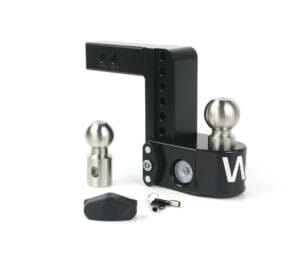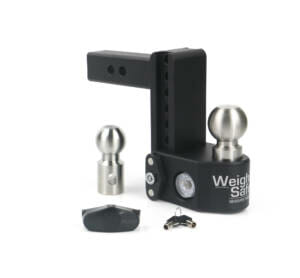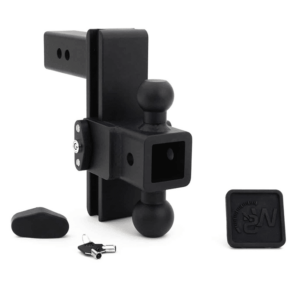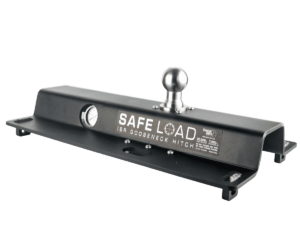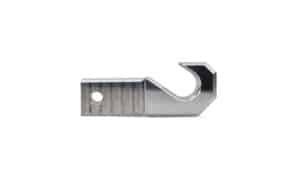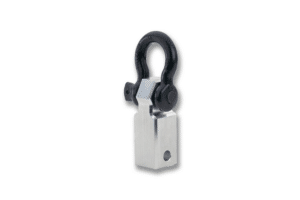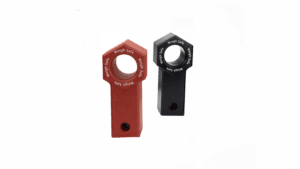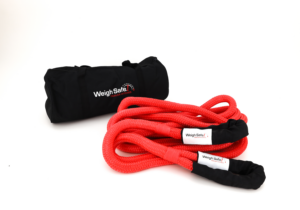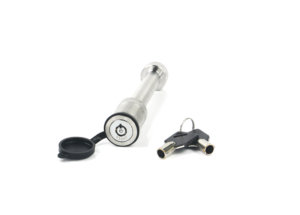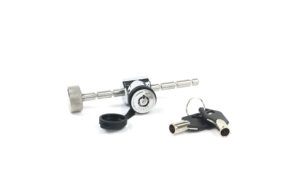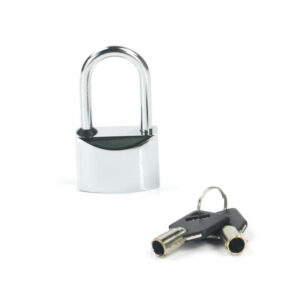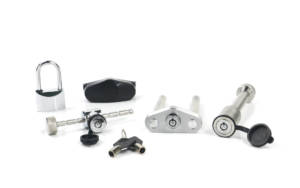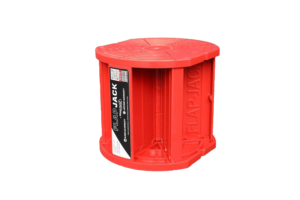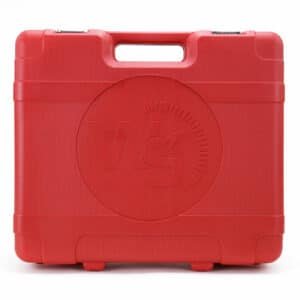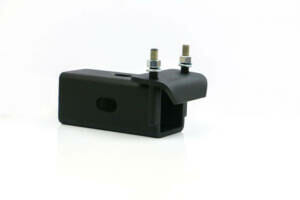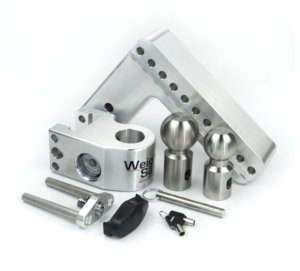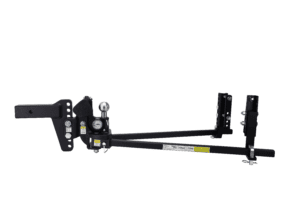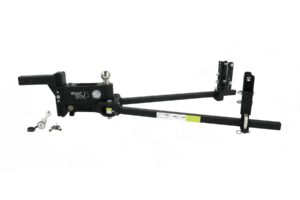Towing heavy-duty sized loads – such as horse trailers, construction equipment, or RV’s – comes with even more safety considerations and responsibilities than conventional towing, and we want to provide a complete guide for safe heavy-duty towing for heavy loads weighing 16,000 – 30,000 lbs, or more. Unlike towing with a receiver hitch, towing heavy-duty trailers requires an in-bed gooseneck or 5th wheel hitch system that is more robust. Those who tow within their heavy load’s target tongue weight have a huge safety advantage that is hard to overstate and we want to help people understand just how important (and easy!) it is to weigh your heavy trailer’s tongue weight before you tow. If safely towing heavy-duty trailers and equipment is important to your business or lifestyle then this guide is for you. Let’s begin.
What is Safe Heavy-duty Towing?
Safe heavy-duty towing is adhering to the weight ratings, safety recommendations, and specifications of your heavy-duty trailer hitch systems: what are the capacities of a gooseneck hitch? How do you hook up a gooseneck trailer to your truck? What is a heavy-duty trailer’s target tongue weight? Does my truck feature the necessary platform for a heavy-duty towing hitch?? Let’s start at the beginning…
#1 – Choosing A Heavy-duty Hitch System That Meets Your Needs
A Class V receiver hitch (the heaviest-duty class of bumper receiver hitches), maxes out at weight capacities of 20,000lbs. If you’re towing payloads over 16,000lbs, then it’s time to consider leveling-up your hitch system to ensure your towing equipment can safely handle 16,000 – 30,000 lbs, or more, of payload.
What is a gooseneck hitch?
 A gooseneck hitch is a truck bed hitch – installed into the frame of your pickup truck’s bed over the rear axle – that connects to a gooseneck trailer using a hitch ball. The main body of the hitch typically mounts underneath the truck bed and bolts onto the truck frame using brackets. This provides far greater strength and stability for the tow operation so that larger loads can be safely carried.
A gooseneck hitch is a truck bed hitch – installed into the frame of your pickup truck’s bed over the rear axle – that connects to a gooseneck trailer using a hitch ball. The main body of the hitch typically mounts underneath the truck bed and bolts onto the truck frame using brackets. This provides far greater strength and stability for the tow operation so that larger loads can be safely carried. 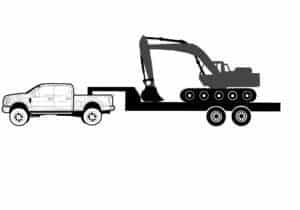
What is your truck already equipped with?
Gooseneck hitches are uniquely designed for pickup trucks. As such, some trucks come with a towing prep package with the necessary platform pre-installed to streamline gooseneck hitch installation. You can start by determining what trailer hitch system your pickup truck is already equipped with. There are three basic gooseneck hitches:
 |
 |
 |
| Puck System Gooseneck: | Traditional Gooseneck: | 5th Wheel Gooseneck: |
| For trucks equipped with an original factory puck system | For trucks that do not have a factory puck system, and use traditional underbed brackets | For trucks already equipped with 5th wheel base rails |
 |
 |
 |
| Requires: OEM Gooseneck Ball | Requires: BW Insert Gooseneck Ball | Requires: ISR Gooseneck Hitch |
| Puck systems vary across truck brands. A Safe Load OEM Gooseneck Ball is compatible with any OEM puck system (Ford, Dodge, Nissan, Toyota, GMC, Chevy). | This is the traditional method for installing a gooseneck hitch into the bed of your truck. The BW Safe Load Gooseneck hitch fits nearly all BW Turnover Ball models. | If you already have permanent 5th wheel base rails installed and would like to tow a gooseneck trailer, a Safe Load ISR Gooseneck easily drops into any set of industry-standard 5th wheel base rails. |
#2 – Abiding by the Lowest Tow Rating
It is important to remember that no matter which gooseneck hitch you choose for your truck, towing capacity is very important – not only the towing capacity of your truck, but of each piece of towing equipment.
As a rule, your towing capacity is always limited to the lowest-rated towing component, whether that is your truck, trailer, gooseneck hitch, accessories or any other part of the system.
 Here are a few vital formulas to help you review and double check the capacities of each component:
Here are a few vital formulas to help you review and double check the capacities of each component:
Capacity of your truck
Since gooseneck trailer hitches are rated for really heavy loads, first thing first is to make sure your truck has the towing capacity to handle the load. Start by getting some information from your door sticker: 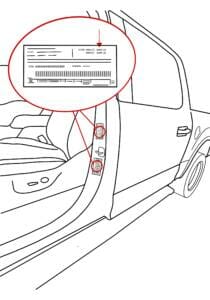
- GVWR – Gross Vehicle Weight Rating (the maximum amount your truck can safely weigh when loaded. It also includes tongue weight, which is not the weight of the loaded trailer itself, but the downward force it exerts on the gooseneck ball hitch)
- GCWR – Gross Combined Weight Rating (the maximum combined amount your truck and trailer can safely weigh when loaded)
- Payload Capacity – the maximum cargo weight that you can safely add to your truck’s curb weight (GVWR minus the truck’s curb weight)
- Curb Weight – this is how much your truck weighs empty (without anyone in it or any cargo)
Tow Capacity Formula
- Find out curb weight.
- Add the weight of the payload (passengers, cargo, tongue weight) to the curb weight.
- Subtract this number from your truck’s GCWR.
- This is your max towing capacity.
- Check to make sure your hitch and trailer can also handle this weight.
Here’s an example with numbers. Let’s say your Ford F450 pickup truck has a GCWR of 43,500 lbs. It weighs 8,000 lbs empty, and you’ve calculated that the tongue weight of your gooseneck flatbed trailer (loaded with a backhoe) should be right around 3,150 lbs. Your towing capacity would be no more than 32,350 lbs. You’ve calculated that the weight of your trailer (6,000 lbs), plus the weight of your backhoe (15,000 lbs) equals 21,000 lbs, so you feel confident that your truck has the capacity to tow your load safely. You’ll also have plenty of leeway for passengers and other cargo you might add to your cab. 
Capacity of your trailer
To determine the safest load limit for your trailer, start by locating the Federal Certification/VIN label on the front half of your trailer. It should be located on the left side. Specifications on the label should include:
- GVWR – Gross Vehicle Weight Rating (the total maximum amount your trailer can safely weigh when loaded)
- GAWR – Gross Axle Weight Rating (the maximum amount of weight that can be placed over each axle)
- Payload Capacity – the maximum amount of cargo weight that you can safely load onto your trailer (your trailer’s load limit)
- Trailer Weight – this is how much your trailer weighs empty (you can weigh your empty trailer at a local weigh station)

Trailer Load Limit Formula
- Find your trailer’s GVWR (or max Gross Trailer Weight, GTW)
- Subtract your trailer weight.
- This is your trailer load limit.
- Check to make sure your truck is capable of pulling your trailer’s GVWR, and that you’re following tire, hitch, and loading specifications.
Let’s go back to our example with numbers. You’ve calculated that your truck’s towing capacity is 32,350 lbs. Your gooseneck flatbed trailer has a GVWR of 24,000 lbs and it weighs 6,000 lbs empty. Your trailer’s load limit is no more than 18,000 lbs. Important note: Even though your truck has the capacity to tow a trailer load weighing up to 26,350 lbs, you are limited to your trailer’s load limit of 18,000 lbs.
Capacity of your gooseneck hitch
The standard gooseneck ball size is 2-5/16 inches and is rated for 30,000 lbs. A gooseneck hitch system installed into the bed of your truck should be designed to match the towing capacity of your truck.
| Type | Standard Tow Ball Diameter | Max Tongue Weight | Gross Trailer Weight (GTW) Max |
Safe Load OEM Gooseneck Ball  |
2-5/16 | 7,500 lbs | 30,000 lbs |
Safe Load BW Insert Gooseneck Ball  |
2-5/16 | 7,500 lbs | 30,000 lbs |
Safe Load ISR Gooseneck Hitch  |
2-5/16″ | 7,500 lbs | 30,000 lbs |
Let’s go back to our example with numbers. You’ve calculated that your truck’s max towing capacity is 32,350 lbs, that your gooseneck flatbed trailer’s max load limit is 18,000 lbs, and that your gooseneck ball has a max GTW of 30,000 lbs. In this scenario, you can feel confident that each part of your gooseneck trailer hitch system has the capacity to tow a backhoe weighing 15,000 lbs. 
#3 – Hooking Up Securely
The components of a gooseneck trailer hookup include:
- the ball and hitch assembly located in the bed of your tow vehicle
- the coupler on the trailer
- safety chains
- a breakaway brake system cable
- jack feet on the trailer
- electrical connection (generally a 7 pin connection that provides power to running lights, brake and turn signal lights, electric brakes on the trailer and power for any power accessories included with the trailer)
Before you begin positioning your truck, be sure to lock your tow ball hitch into place and to adjust the height of your trailer’s coupler for adequate clearance.
Clearance Formula
- Measure the distance from your truck bed to the ground
- To this number, add the height of the tow ball
- Be sure to raise your gooseneck coupler so that the distance from the bottom of the coupler to the ground is higher than this number
- This will give you the clearance you need before backing up your truck
Pro tip: Be sure to lower the tailgate before backing up your truck into position. It is important to note that, depending on hitch placement in the bed of your truck, it may be necessary for you to close the tailgate before moving the truck further rearward to avoid damage to your tailgate or trailer.
Step by Step Gooseneck Trailer Hook Up:
- Back up your truck so that the ball is in alignment with the trailer’s coupler
- Begin to lower the trailer down onto the ball using the trailer jack system
- Continue spinning the jack (it will get easier as the truck shoulders the tongue weight of the trailer) until the jack can go no further
- For trailers with a manual jack system, stow your jack handle
- Retract trailer legs. To avoid slamming (or pinching a finger!), apply pressure to the foot of the trailer leg with your own foot, then pull the release pin, turning it 90 degrees to the locked position. When you’re ready, remove your foot and permit the quick release mechanism to retract..
- Lock the coupler onto the ball. Swing the latch pin out of the catch, letting it drop down through the hole in the plate. Then fold the latch pin handle back to the side of the coupler
- Attach the safety chains to the chain safety hooks in the bed of the truck
- Ensure that the breakaway cable is securely attached to a point separate from the coupler or safety chains (i.e. a separate cleat or attachment point in the bed of your truck)
- Securely plug in the electrical connector
- Check running lights, brake lights and turn signal operation
#4 – Checking and Adjusting the Trailer Brake System
Once you have done a light check, it is also very important to do a trailer brake check. Some trucks have an integrated trailer brake controller right in the dash. Or you can purchase an external trailer brake controller. 
 Gooseneck trailer brakes should be adjusted according to load. For example, when towing a heavy load, you’ll want them set to use a lot of force, but when the trailer is empty, the trailer’s brakes should be set to use less force, so that the trailer’s tires aren’t locking up and skidding. Step by Step Brake Check:
Gooseneck trailer brakes should be adjusted according to load. For example, when towing a heavy load, you’ll want them set to use a lot of force, but when the trailer is empty, the trailer’s brakes should be set to use less force, so that the trailer’s tires aren’t locking up and skidding. Step by Step Brake Check:
- Don’t just trust the number display on your controller.
- First, manually check that the trailer brakes are working:
- Remove your foot from the truck’s brake.
- Slowly move forward, about 2 mph.
- Use the manual trigger (not the truck brake) to activate the trailer brakes.
- You should feel it when the trailer brakes activate. They should pull your truck to a stop.
- Adjust the maximum output
- Maximum output is the maximum amount of power the brake controller will apply to the trailer brakes. You will need to set this level and adjust it depending on the load size.
- In an open area, test the trailer brakes by driving forward at about 25 mph and applying the brakes. If the vehicle stops too slowly, increase the maximum output. If it stops too abruptly or locks up, reduce the output.
- Adjust the sensitivity level
- Sensitivity is how aggressively your brake controller will apply the brakes.
- Drive forward at about 25 mph and press the brake pedal. If the vehicle stops too slowly, increase the sensitivity setting. If it stops too abruptly, lower the sensitivity.
- Manually activate brakes as needed
- Most trailer brake controllers come with a manual activation button. This allows you to activate the trailer brakes whenever desired, without applying the vehicle brakes.
- Manual trailer brake activation can be useful for correcting minor trailer sway and gradually slowing down on a steep hill or before stops.
#5 – Properly Adjusting Tongue Weight and Securing Your Load
Safe towing requires a certain amount of downward pressure on the hitch ball, called tongue weight, to ensure that the trailer will tow straight and remain stable. In all cases, it is not the weight itself that matters, it’s what tongue weight represents: that the trailer’s center of mass is situated ahead of its axle. 
How Tongue Weight Affects Your Truck’s Stability and Handling:
(embedded thumbnail https://youtu.be/w9Dgxe584Ss)
Gooseneck trailer hitches are designed to handle larger loads. Proper tongue weight is typically 15% – and should never exceed 25% – of your loaded trailer’s weight. Use this formula to calculate the recommended amount of tongue weight for your trailer:
Target Tongue Weight Formula
- Find your GTW (Gross Trailer Weight. This is the weight of your trailer, plus the weight of the cargo you’ve loaded onto it. GTW can also be referred to as GVW, Gross Vehicle Weight).
- Multiply GTW by (0.15).
- This is your target tongue weight.
- Multiply GTW by (0.25).
- This is your tongue weight’s maximum.
- When loading your trailer, aim to position your cargo so that your trailer’s tongue weight is not too low, or too high. Also, check to make sure the tongue weight isn’t putting your truck’s payload capacity above its maximum.
Let’s follow up on our example with numbers. You’ve calculated that it’s safe to load a 15,000 lbs backhoe onto your new trailer. This brings your GTW to 21,000 lbs. This means your target tongue weight is 3,150 lbs. 
How to measure the tongue weight of your heavy-duty loaded trailer:
Say hello to the Safe Load Gooseneck Hitch: the only gooseneck trailer hitch with a built-in scale. A Safe Load Gooseneck Hitch is the easiest solution for:
- measuring tongue weight – automatically providing a measurement every time you couple your trailer
- adjusting your load before you hit the road
How to adjust tongue weight:
Adjusting your tongue weight involves putting heavier items ahead of the trailer axle, but not all the way towards the extreme forward edge. You’ll also need to center heavy items left-to-right and position them as low to the trailer deck as practical. Be sure to securely fasten down loose items — particularly the heavier ones — so they can’t move and alter the trailer’s tongue weight underway. The goal is to have about 60% of your cargo’s mass ahead of the trailer axle and 40% behind. (embedded HOW IT WORKS VIDEO Can this video be put in as youtube url thumbnail link??)
#6 – Performing Safety Checks and Equipment Maintenance
Safe towing is getting to know your heavy-duty equipment, learning how to install it, and understanding how to operate and maintain it. While many of these items are second nature to experienced trailer users, a pre-trip safety inspection is ALWAYS a good idea. It only takes a few minutes and can pay big dividends in safety. Here’s a helpful checklist to go over each time you hit the road when towing:
Towing Trip Checklist:
- Check all hookups
-
-
- Ensure that your tow ball is locked and pinned securely in place
- Ensure that the coupler is locked onto the ball and that the coupling pin handle is locked into place against the coupler
- Ensure that both jack feet are fully raised into the legs of the trailer
- Ensure that the jack handle is safely stowed in the trailer
- Ensure that both safety chains are attached securely to the bed of the tow vehicle
- Ensure that the breakaway brake cable is securely attached to the body or frame of your truck
- Ensure that the trailer electrical cable is securely connected to the tow vehicle
- Ensure that the running lights, brake lights and turn signal lights are working properly
- Ensure that the brake controller has been properly adjusted
-
- Check your truck and trailer tires.
- Your truck tires may require higher pressure for towing, as recommended in the owner’s manual.
- Your trailer tires may have dry rot or cracking, especially, if your trailer has been stored outside and/or hasn’t been used for a season.
- Don’t forget to check the wheel lug nuts on your trailer and truck are tightened to the specified torque.
- Check your oil, fluids, and brakes. Towing puts additional stress on your truck. So before heading out on a towing road trip, be sure your truck has:
- had a recent oil and filter change
- brake pads with plenty of life remaining
- its engine coolant filled to the proper level in the reservoir
- plenty of transmission fluid
If your trailer has brakes, it’s also a good idea to have those checked, as well, and to keep the wheel bearings greased.
- Take a spare tire kit for your trailer. Make sure you have at least one spare tire for your trailer. You’ll also want a lug nut wrench specific to your trailer’s wheels, as well as a jack that will work properly with your trailer.
- Consider towing mirrors. If your trailer is wider than your truck, look into getting wide aftermarket tow mirrors to help you see your trailer’s blind spots while driving and to aid rear visibility when backing up.
- Plan Ahead for Fuel Stops. You’ll generally use more fuel while towing, and stopping at a small, remote gas station is not so easy with a large truck and gooseneck trailer.
- Use wheel chocks. When unhooking the trailer from your truck, place wheel chocks (sturdy, wedge-shaped blocks) in front of and behind the trailer’s tires to ensure the trailer doesn’t roll away when you release the hitch.
#7 – Using Safe Driving Techniques
In many cases, your trailer will weigh more than your truck. All that extra weight behind the truck will have a huge impact on the truck’s driving ability. You’ll need to learn new driving techniques to ensure safety on the road while towing: Safe Driving Techniques For Towing:
- Allow for longer stopping distances. Be more attentive to vehicles stopping suddenly ahead of you when towing, and begin braking sooner than if you weren’t towing.
- Take constant care to make wider turns at curves and corners.
 Remember, gooseneck hitches pivot faster because they’re attached in the middle of your truck bed (not to the bumper), so you’ll need to swing wider than you would with a receiver hitch trailer.
Remember, gooseneck hitches pivot faster because they’re attached in the middle of your truck bed (not to the bumper), so you’ll need to swing wider than you would with a receiver hitch trailer.
- Drive in the right lane on highways as much as possible. This will make it easier for you to get over to the shoulder if ever you need extra stopping room or happen to have a tire blowout.
- Don’t ride your truck’s brakes on long downhills. Shift the truck’s transmission to a lower gear to help slow the vehicle and take some strain off of the brakes. Applying the brakes at intervals to keep the speed in check (as opposed to constant application of the brake pedal) will help keep the brakes from overheating.
- Consider Height. Trailers can be much taller than the truck, so keep clearances in mind when pulling into gas stations or low bridge situations
- Use a spotter when backing up. Have someone outside at the rear of the trailer while backing up whenever possible. Even wide tow mirrors can’t provide all the visibility you may need, particularly in situations where there are other vehicles, objects, or people in close proximity.
- Check your route ahead of time. Some roads don’t allow trailers on them, and certain roads also have weight, height, and width limits. Plan your route ahead of time to avoid the hassle of having to backtrack to find roads that allow your rig.
Conclusion
If you adhere to these safety guidelines everytime you tow a heavy-duty trailer with your gooseneck hitch, complete towing peace of mind will be yours. Want more towing tips? Browse our how-to videos with tips and guidelines for your next Weigh Safe towing experience!


